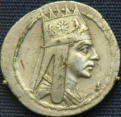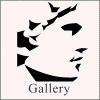



Armenian Jerusalem


1,001 Nights fantasy

Ever
since
he
was
a
child
gamboling
in
the
Armenian
Quarter
of
the
Old
City
of
Jerusalem,
and
later
in
the
cobblestoned
alleys
of
Bethlehem,
Jacques
Sarkis
Kaplanian
had
been
fascinated
by
the
interplay
of
shades
and
colors,
shapes
and
gradations.
While
other
children
brandished
make-believe
guns
and
scimitars
and
engaged
in
mock
battles,
Jacques
wielded
a
paint-brush
and
attacked
canvas
after
canvas,
in
an
outpouring
of
delightful
creativity,
carried
away
by
the
power
it
wielded
in
helping
him
create
phantasmagoric
ghouls
and
sunsets with his fertile imagination.
As
he
grew
older,
and
honed
his
skills,
the
fascination
became
full-blown,
propelling
him
into
fresh avenues of artistic expression.
And
as
the
youth
matured
into
manhood,
he
would
discover
yet
another
dimension
to
exercise
his
skills
with
a
brush
-
hairdressing
-
approaching
it
with
the
same
tenacity
and
devotion
he
had
manifested
in
his
lifelong
love
affair with painting.
But
whether
he
is
wielding
a
hair
brush
or
a
paint
brush,
Jacques
remains
true
to
his
ideal: creating an object of beauty and admiration, be it a hairstyle or a canvas.
A
move
to
Amman,
the
capital
of
the
Jordan,
in
the
wake
of
the
Arab
Israeli
war
of
1948,
proved
the
pivotal
milestone
in
Jacques's
life
for
it
was
not
long
before
his
skills
reached
the
ears of Jordan's aristocratic circles and power elite.
The
royal
command
soon
followed,
and
Jacques
found
himself
catering
to
the
rarefied
wishes
of
members
of
the
Kingdom's
First
Family,
in
particular
the
princesses
Muna
Al
Hussein, Alia Al Hussein, and Serwath Al Hussein.
They
were
heady
days,
but
alas,
all
too
brief.
The
1970
confrontation
between
the
Jordanian
army
and
the
Palestinian
guerrillas
spelled
the
beginning
of
the
end
of
Jacques's
idyll
and,
with
a
family
to
support,
and
a
dream
still
to
realize,
he
began
seeking
greener
pastures elsewhere: Australia, where friends and relatives had settled before, beckoned.
Jacques arrived in Sydney in 1990 and has never looked back.
True,
the
Cadillac
flying
the
royal
Hashemite
Kingdom
of
Jordan
pennant
does
not
call
anymore,
nor
is
there
any
sign
of
the
bandoleered
Bedouin
hajjana
(camel-riding
royal
guards)
that
used
to
welcome
him
at
the
entrance
of
the
palace,
but
then
Jacques
has
found
something
just
as
precious
as
the
prestige
he
once
enjoyed:
the
tranquility
and
security
he
needs
to
give
full
and
unfettered
rein
to
his
creativity,
now
full
blown,
and
branching
out
into sculpture and music.
Jacques
has
had
his
share
of
glamour
and
prestige,
but
there
have
also
been
dark
episodes of disaster and despair.
"I've
never
given
up,
even
in
the
midst
of
the
worst
calamity
to
befall
me,"
he
tells
this
interviewer.
The
calamity
he
was
referring
to
was
a
night
journey
he
undertook
with
his
new
bride,
Olga,
20
years
ago,
through
the
violence
swept
minefields
of
Jericho.
As
he
drove
through
the
threatening
night,
he
was
stopped
at
a
roadblock
and
called
upon
by
masked
gunmen
to
get out.
Some
sixth
sense
warned
Jacques
that
would
not
be
a
good
idea.
He
slammed
his
foot
on
the
pedal
and
raced
away,
to
the
accompaniment
of
an
angry
fusillade
of
bullets
that
perforated
his car, and tore out a chunk of his shoulder.
But he did get away.
"I
mostly
remember
the
courage
of
my
wife,
her
amazing
self-control,
as
I
wrestled
to
control the car despite being shot," Jacques recalls.
Jacques
attributes
his
interest
in
the
arts
to
the
cultured
and
refined
environment
provided
by his parents and the constant encouragement he received from them and from his wife.
"I
studied
art
and
became
well
known
for
my
detailed
paintings
and
as
always
fascinated
by the human form, painted caricatures and portraits of the people around me."
Jacques
was
born
in
Jerusalem
in
1939
but
left
for
Bethlehem
slightly
before
the
first
Arab-Israeli war of 1948.
In
1960
he
left
Bethlehem
for
France,
to
study
ladies
hairdressing
at
the
Eugene
Gallia,
Paris.
During
this
time
he
also
enrolled
at
the
Ecole
des
Beaux
Arts
and
studied
under
the
enthusiastic
guidance
of
Frank
Postillion,
and
Jean
Marie
Nodin,
receiving
tuition
in
the
Post
Impressionist movement.
The
ladies
hair-dressing
salon
Jacques
established
in
Amman
grew
into
a
thriving
business
and
acted
as
a
stepping
stone
for
an
ambitious
export
drive
to
Iraq
which
ground
to
a
halt
during the Gulf War of 1991.
Jacques
continued
to
run
his
salon,
a
job
he
descries
as
very
demanding
and
time
consuming,
but
managed
to
find
time
to
keep
painting.
He
held
his
first
exhibition
at
the
Jordan
Intercontinental
Hotel
in
Amman
in
1964.
Following
the
success
of
that
exhibition
he
went on to organize several more in downtown Amman.
"My
fondness
for
the
human
form
was
enhanced
by
my
field
trips
into
the
outer
reaches
of
Jordan
to
create
studies
of
native
tribes
people,
the
spectacular
Bedouin
nomads
of
the
desert.
Many
of
these
sketches
still
survive
to
this
day
and
often
form
a
basis
to
my
fantasy
pieces," he says.
In
the
aftermath
of
the
civil
war
in
Jordan,
Jacques
virtually
lost
everything
that
he
had
worked
so
hard
for,
and
had
no
option
but
to
seek
respite
from
the
political
travails
of
the
region, and embarked upon a new odyssey, this time to Sydney, Australia.
Ever
eager
to
further
his
education,
Jacques
enrolled
at
the
North
Sydney
Art
Center
where he also was given the opportunity to hold several exhibitions.
But,
as
with
a
great
number
of
migrants
from
the
Middle
East
who
miss
the
rich
social
life
they
had
taken
for
granted,
Jacques
became
homesick
and
returned
to
Jordan
in
1976
where
he
established
a
hair
cosmetics
business,
eventually
manufacturing
his
own
line
of
cosmetics
products geared to the export trade.
Between
1976
and
1993
he
held
several
exhibitions
in
Jordan
and
also
traveled
extensively
overseas,
with
stopovers
in
France,
Greece,
Cyprus,
England,
the
Middle
and
the
Far East, where he exhibited more of his paintings.
But
Australia
beckoned
once
more,
and
Jacques
packed
his
bags
and
flew
back
to
the
lucky country, opting this time to settle in Perth.
In
time,
he
became
a
resident
artist
at
the
Fremantle
Allegretta
Artists
Studios
and
Gallery
where he participated in a joint exhibition opened by the Hon Carmen Lawrence.
He
also
exhibited
at
the
Galleria
Del
Mondo
in
Fremantle,
and
in
1995
was
awarded
the
Community
Arts
Certificate
of
Appreciation
as
organizer
of
the
Gosnells
Multicultural
Art
Forum.
It was during his tenure at Fremantle that he began experiment with sculpture.
"I
felt
that
I
needed
the
challenge
of
a
new
discipline
and
began
working
in
wood,
producing
several
beautiful
fantasy
pieces.
This
eventually
led
me
into
experimenting
with
clay
as
a
medium,
and
this
became
my
forte.
I
now
specialize
in
creating
sophisticated
and
detailed
spectacular
fantasy
clay
sculptures
and
my
work
has
been
appreciated
at
several
galleries of note in and around Perth," he said.
His
three
children,
Sammy,
Ronny
and
Annie
are
now
grown
up
and
living
their
own
life,
but
every
single
one
of
them
has
inherited
the
artistic
gene
of
their
father
and
genteel
culture of their mother.
Jacques is very proud of them.
"They work wonders with computers," Jacques says.
Computer graphic art is one medium he is still to try.
"I'll have to leave that to Annie - she's a born graphic artist," he chuckles.
Jacques lives in Perth, Western Australia with his wife Olga and three children.


































